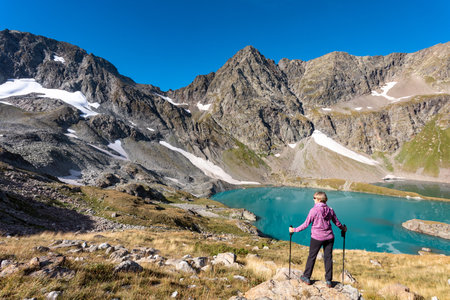Essential Gear for Bird Photography in the UK
When it comes to bird photography in the UK, selecting the right gear is critical for both achieving high-quality images and ensuring your comfort across the country’s diverse conditions. The British climate can be notoriously unpredictable, with frequent rain, misty mornings, and variable temperatures, so durable and weather-sealed equipment is a must. For cameras, a DSLR or mirrorless body with fast autofocus and good low-light performance is recommended; popular models among British birders include the Canon EOS R7 and Nikon Z6 II, as they balance portability with advanced features. Lenses are equally important—ideally, a telephoto lens of at least 300mm will enable you to capture distant subjects without disturbing them. Many enthusiasts favour 100-400mm or 150-600mm zooms for versatility on trails and in hides.
Aside from camera bodies and lenses, field accessories tailored to UK landscapes make all the difference. A sturdy tripod or monopod is essential for stability on uneven ground commonly found in British reserves and woodlands. Waterproof camera covers and lens rain sleeves protect your kit during sudden downpours, while lightweight but robust binoculars (8×42 or 10×42) are invaluable for spotting elusive species before you set up your shot. Don’t forget practical clothing: waterproof jackets, comfortable walking boots, and fingerless gloves allow dexterity while keeping you dry. Finally, a reliable backpack with ample padding helps transport your gear safely between hides and along nature trails, ensuring you’re always ready for that perfect encounter with Britain’s avian residents.
2. Top Birdwatching Trails and Reserves
Britain’s diverse landscapes, from rugged Scottish coasts to tranquil English wetlands, offer an exceptional array of birdwatching trails and reserves. Whether you are a seasoned birder or a keen photographer seeking iconic British species, knowing where to go is half the battle. Below is a guide to the most productive birding locations across England, Scotland, Wales, and Northern Ireland, ensuring you make the most of your field outings.
England’s Premier Birding Destinations
| Location | County/Region | Main Species | Best Season |
|---|---|---|---|
| RSPB Minsmere | Suffolk | Avocet, Bittern, Marsh Harrier | Spring/Summer |
| Slimbridge Wetland Centre (WWT) | Gloucestershire | Bewicks Swan, Lapwing, Kingfisher | Winter/Spring |
| Bempton Cliffs (RSPB) | East Yorkshire | Puffin, Gannet, Kittiwake | Late Spring/Summer |
| The New Forest National Park | Hampshire | Dartford Warbler, Woodlark, Nightjar | Spring/Summer |
Scotland’s Wild Bird Havens
The Scottish Highlands and islands are renowned for their dramatic scenery and rare species. Sites like the Isle of Mull are prime for photographing White-tailed Eagles and Hen Harriers. The Cairngorms National Park offers chances to spot Ptarmigan and Crested Tit amid ancient pine forests.
Recommended Scottish Reserves:
- RSPB Loch Garten (Cairngorms): Famous for Osprey viewing; best visited April–August.
- Isle of May National Nature Reserve: Puffins in their thousands during late spring and summer.
Welsh Wetlands and Coastal Wonders
Wales boasts some of the UK’s richest coastal habitats. Skomer Island, off Pembrokeshire, is legendary for its puffin colonies and Manx shearwaters. Inland, Llanelli Wetland Centre (WWT) provides year-round opportunities for wildfowl photography.
Top Welsh Trail:
- Dinas RSPB Reserve: Red Kite, Pied Flycatcher; best in late spring.
Northern Ireland’s Hidden Gems
Northern Ireland offers under-explored sites perfect for those seeking less crowded experiences. Lough Beg Reserve, near Lough Neagh, draws Whooper Swans in winter and hosts breeding waders in summer. The Giant’s Causeway Coastline, aside from its geological wonders, can deliver close encounters with seabirds including razorbills and fulmars.
Summary Table: UK’s Top Birding Locations by Region
| Region/Nation | Must-Visit Site(s) | Main Attraction(s) |
|---|---|---|
| England | Minsmere, Slimbridge, Bempton Cliffs, New Forest NP | Diverse waders & raptors, seabird colonies, heathland species |
| Scotland | Cairngorms NP, Isle of May, Isle of Mull | Eagles, seabirds, woodland specialists |
| Wales | Skomer Island, Dinas Reserve, Llanelli WWT | Puffins, red kites, migratory wildfowl |
| Northern Ireland | Lough Beg Reserve, Giant’s Causeway Coastline | Swans, breeding waders, seabirds on cliffs |
Selecting the right reserve or trail not only increases your chances of successful bird photography but also immerses you in some of the UK’s finest natural settings. Always check local guidance on access and seasonal highlights to maximise your experience in the field.

3. Using Hides: Techniques and Etiquette
Bird hides are integral to bird photography in the UK, providing unparalleled opportunities to observe and capture wildlife with minimal disturbance. To make the most of your time in a hide, it is essential to understand both the practical techniques and the etiquette expected by the local birding community.
Choosing and Accessing Hides
The UK boasts an extensive network of hides, often managed by local wildlife trusts, RSPB reserves, or county councils. Before visiting, check whether booking is required and familiarise yourself with opening hours and any fees. When approaching a hide, move quietly and avoid sudden movements that could startle nearby birds or disrupt other photographers.
Techniques for Effective Bird Photography from Hides
Once inside, set up your gear with care, keeping lens hoods and tripods clear of entryways. Patience is key; allow time for birds to acclimatise after your arrival. Use longer lenses (300mm or more) to photograph distant subjects without needing to lean out or open windows unnecessarily. Always shoot through the designated openings, as this prevents disturbing wildlife and maintains the integrity of the hide.
Respecting Local Customs and Regulations
In British bird hides, quietness is highly valued. Speak in hushed tones if conversation is necessary and switch mobile phones to silent mode. Avoid reserving space for absent companions or monopolising prime viewing positions for extended periods. Many reserves request that you do not bring food with strong odours, as this can deter birds or attract unwanted species.
Wildlife Welfare Comes First
Avoid using flash photography as it can distress birds, particularly sensitive breeding species. Do not attempt to attract birds using calls or baiting unless specifically permitted by reserve guidelines. Always leave the hide as you found it—dispose of litter responsibly and ensure all windows and doors are securely closed upon departure.
Courtesy Towards Fellow Birders
Share sightings with newcomers and be willing to offer advice when appropriate—this collaborative spirit is characteristic of the UK’s birding community. If the hide becomes crowded, be mindful of your equipment footprint and offer space so everyone has a fair chance at observation and photography.
By adhering to these principles, you will not only increase your chances of exceptional shots but also contribute positively to both conservation efforts and the camaraderie that makes British birdwatching so rewarding.
4. Understanding UK Bird Species and Seasons
To maximise your bird photography adventures in the UK, it is crucial to understand both the diversity of British birdlife and the seasonal rhythms that influence where and when you can find particular species. The UK is home to a fascinating mix of resident, migratory, and passage birds, each offering unique photographic opportunities throughout the year.
A Seasonal Overview of British Birdlife
The British Isles provide habitats for over 600 recorded bird species, with around 250 breeding regularly. The ever-changing seasons dramatically affect which birds are visible and their behaviours—be it courtship displays, nesting, or migration stopovers. Knowing these cycles will help you plan successful outings and capture striking images.
Resident vs Migratory Species
| Season | Resident Species (Examples) | Migratory/Seasonal Highlights |
|---|---|---|
| Spring (March–May) | Robin, Blue Tit, Blackbird | Arrival of Swallows, Warblers; displaying Lapwings; booming Bitterns |
| Summer (June–August) | Woodpigeon, Great Spotted Woodpecker | Breeding seabirds on coastal cliffs (Puffins, Guillemots); Ospreys at freshwater reserves |
| Autumn (September–November) | Crow, Wren, Dunnock | Migrating waders and wildfowl; Redwings and Fieldfares arriving from Scandinavia |
| Winter (December–February) | Magpie, Goldfinch, Nuthatch | Spectacular flocks of Starlings (murmurations); Whooper Swans and Pink-footed Geese at wetlands |
Where to Find Key Species Throughout the Year
- Woodland Reserves: Best for resident songbirds such as tits and finches all year round; woodpeckers most active in spring.
- Coastal Cliffs: Ideal for photographing breeding seabirds like Puffins between May and July.
- Lakes & Wetlands: Prime spots for wintering wildfowl from October through February; also attract migrant waders during autumn and spring passage.
Tapping into local knowledge—such as RSPB reserve reports or county bird clubs—can keep you informed about notable arrivals or rare vagrants. By aligning your visits with seasonal highlights, you’ll significantly increase your chances of capturing dynamic images of Britain’s avian wonders.
5. Tips for Capturing Iconic British Birds
Photographing Britain’s most celebrated bird species—such as the puffin, kingfisher, barn owl, or red kite—demands both technical skill and an understanding of their unique behaviours. Below are field-proven techniques to elevate your bird photography in the UK.
Timing and Patience: The Essentials
Early mornings and late afternoons typically offer the best light and heightened avian activity. Many iconic species are crepuscular, so plan your outings to coincide with these windows. Patience is a photographer’s greatest ally; settle in quietly and allow birds to acclimatise to your presence.
Mastering Fieldcraft for British Species
Understand Local Habitats
Research where your target species thrives—coastal cliffs for puffins, riversides for kingfishers, ancient woodland for tawny owls, and open countryside for red kites. Use OS maps and local wildlife reports to pinpoint likely locations.
Blend In
Camo clothing and natural hides help you remain unobtrusive. Move slowly and keep a low profile to avoid disturbing sensitive birds, especially during breeding seasons protected by UK law.
Technical Considerations
Camera Settings
Shoot in aperture priority mode (f/5.6–f/8) to ensure sharpness while maintaining background blur. Use a fast shutter speed (at least 1/1000s) for flight shots, and increase ISO as needed without compromising image quality.
Autofocus Techniques
Select continuous autofocus (AI Servo/AF-C) and use back-button focus for greater control. Track moving subjects with the central focus point for precision.
Creative Composition
Position your subject off-centre using the rule of thirds, include elements of the British landscape where possible, and experiment with silhouettes against dramatic skies or reflections on water for evocative results.
Respect Wildlife and Legislation
The welfare of birds must always take precedence. Adhere strictly to the Countryside Code and relevant wildlife protection laws such as the Wildlife & Countryside Act 1981. Avoid nests and minimise disturbance at all times.
Field Leader’s Insight
Keep a field notebook to document conditions, behaviours, and successful techniques. Over time, this builds valuable knowledge unique to each location—a hallmark of accomplished bird photographers across the UK.
6. Respecting Nature: Codes of Conduct
When photographing birds in the UK, it is essential to approach your craft with respect for wildlife, habitats, and local communities. Ethical practices are not only a matter of personal integrity but also a legal requirement under UK law. Familiarise yourself with the Countryside Code, which outlines clear guidelines on how to enjoy the outdoors responsibly. Always stick to marked trails and public rights of way; trespassing on private land without permission can result in prosecution. Many nature reserves and hides have specific rules—such as restricted access during nesting season or limitations on group sizes—so check signage and consult reserve staff if unsure.
Guidance on Ethical Practices
Minimise disturbance to birds by keeping a respectful distance at all times; use telephoto lenses rather than approaching nests or perches. Avoid playback calls or baiting, both of which can cause undue stress to birds and disrupt natural behaviours. Remain patient and blend into your surroundings; sudden movements or loud noises can alert birds and spoil opportunities for others.
Understanding Access Rights under UK Law
The UK has a unique framework of access rights, particularly in Scotland under the Land Reform (Scotland) Act 2003, which grants broad access to most land for recreational purposes provided you act responsibly. In England, Wales, and Northern Ireland, stick to public footpaths and bridleways unless you have explicit permission from the landowner. Pay attention to seasonal restrictions designed to protect sensitive species, especially during breeding seasons.
Low Impact Photography: Local Expectations
Responsible bird photography means leaving no trace—take all litter home, avoid trampling vegetation, and refrain from disturbing wildlife or livestock. Respect other visitors’ experiences by keeping noise levels down and sharing space considerately in hides or along busy trails. Finally, always report any signs of injured or distressed wildlife to local wardens or organisations such as the RSPB (Royal Society for the Protection of Birds). By adhering to these principles, you help ensure that the UKs rich birdlife remains undisturbed for generations of photographers and nature lovers to come.


